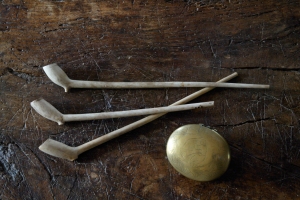Revisited Myth #4: When men smoked, they often shared the same white clay pipe. For sanitary reasons, they would break off the tip of the long stem before passing on the pipe.
I found this an interesting read and also the www has some great articles. Link below;https://historymyths.wordpress.com/...-of-the-long-stem-before-passing-on-the-pipe/


